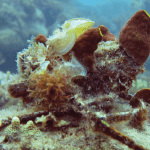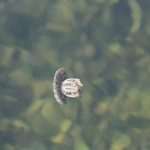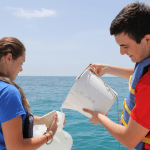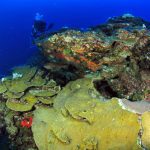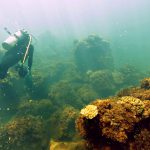The behavior and movement of sea turtles during their first few years at sea, known as the ‘lost years’, remains largely a mystery. Researchers from NOAA-AOML, NOAA Fisheries, University of Central Florida, and Projecto TAMAR recently collaborated on a study to explore the mechanisms of dispersal in Brazilian loggerhead turtles, to fill in some of these important early life history gaps. A previous study conducted in the Gulf of Mexico debunked the historic belief that young sea turtles rely solely on riding currents as a passive mechanism of dispersal. This latest study uncovers new drivers behind the travels of young sea turtles, suggesting there may be more of an ecological implication behind their behavior than previously realized.
“This behavior may allow Brazilian turtles to spread risk for their offspring between two largely independent ocean basins, fostering a more resilient population†explains co-author Nathan Putman from NOAA-AOML.
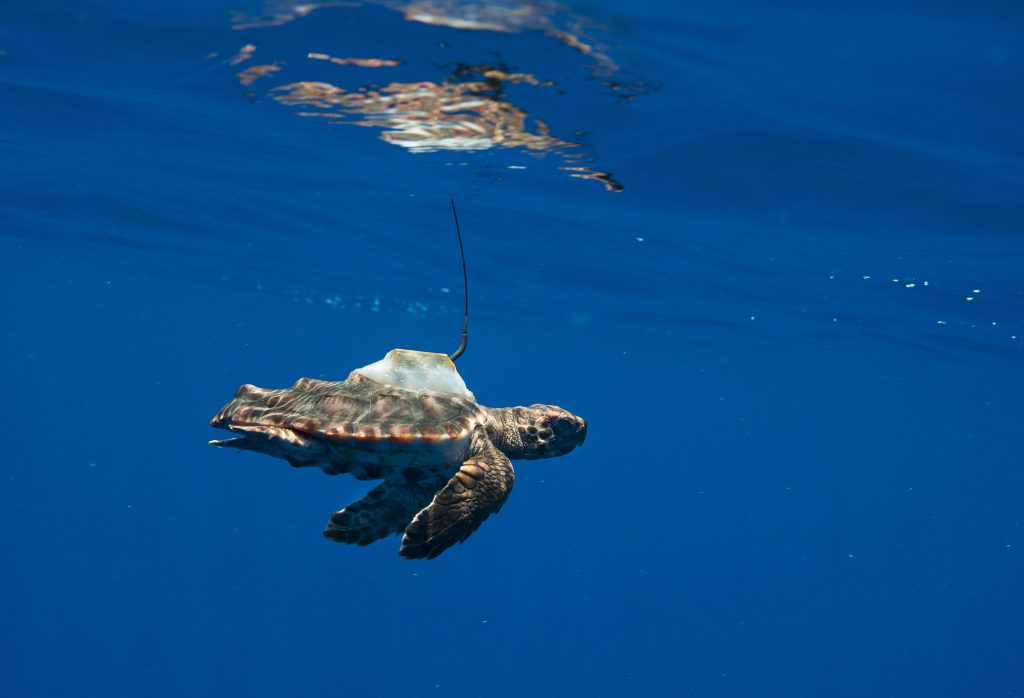
A young loggerhead is released off the coast of Bahia, Brazil. Each time the turtle surfaces, the satellite tag is able to transmit the turtles location. Image credit: Projecto TAMAR.
In Brazil, the loggerhead nesting season occurs from September to March. During the period of hatchling emergence, between November and May, the direction and intensity of ocean currents off the Brazilian coastline changes from southward to northward as the hatching season progresses.
Using satellite tracking tags weighing less than 5% of the young turtles’ body weight, scientists released and tracked 19 young loggerheads for more than 120 days off the coast of Bahia, Brazil. They released the turtles in three stages: early in the hatching season when prevailing currents are to the south; mid-season as the currents begin to shift; and late in the season when offshore currents flow northward. With each turtle release, scientists also deployed passive oceanographic drifters at the same time and location as controls in testing for active versus passive turtle swimming behavior.
Of the seven turtles released during the early hatching season, five traveled south, following the prevailing current. All five turtles released in the middle of the season initially moved southward, with three redirecting north by the middle of May. The seven turtles released at the end of the hatching season quickly traveled north, one reaching as far north as Barbados. All but one turtle remained at sea during the study, while 93% of the passive drifters deployed throughout the study traveled west and washed ashore within a month, suggesting that the prevailing currents aren’t as fully responsible for the turtles’ dispersal as historically assumed. Instead, some level of orientation and active swimming is involved to keep them offshore and at sea.
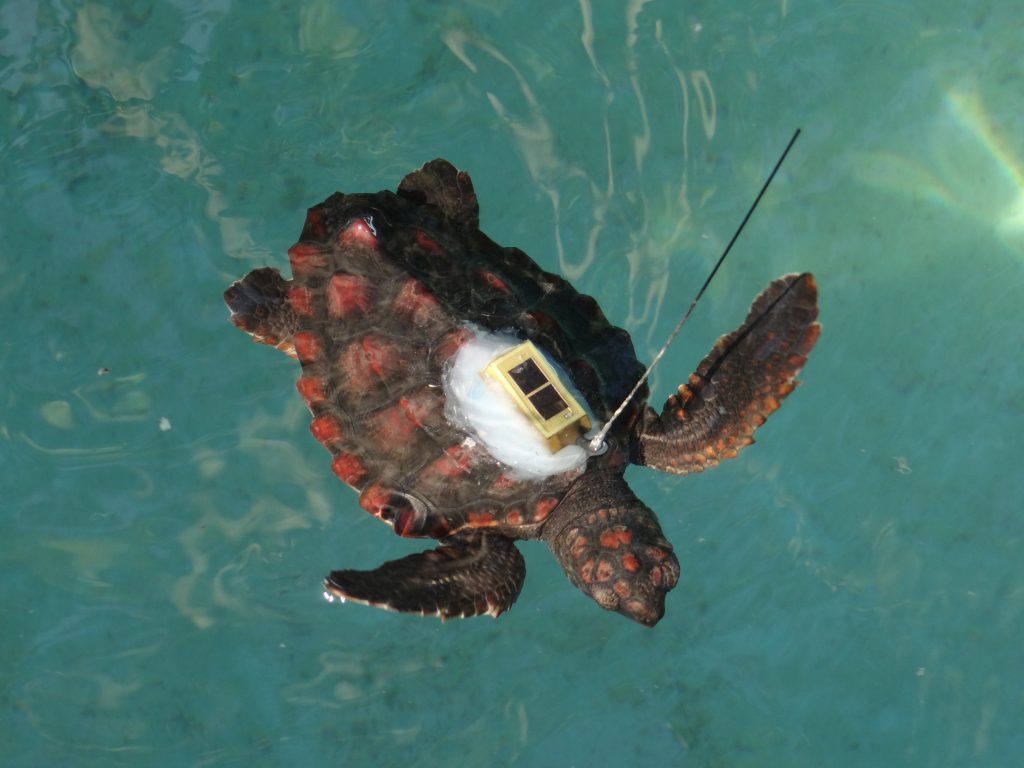
Scientists attach solar-powered satellite tags to the young turtles shell in the laboratory. Image credit: NOAA
The dynamic ocean currents off the coast of Bahia that shift during the hatching season play an important role in the distribution of South Atlantic loggerheads, possibly buffering the population against environmental changes or even anthropogenic threats in different regions. Female loggerheads nesting in Bahia lay an average of four nests per season, making it probable that their offspring would disperse both north and south, depending on the time of year they hatched. The authors refer to this as “not putting all of their eggs into one hemispheric basket.â€
Understanding the dispersal and behavior of a species throughout its lifecycle is critical for species conservation. While many questions remain to be answered regarding the early life history of sea turtles, this study adds weight to earlier conclusions of active dispersal, demonstrating that young turtles are capable of crossing oceanic basins during their ‘lost years’. Lead author Katherine Mansfield explains “as we track more young turtles in different ocean basins under different oceanographic conditions, we are finding that long-held assumptions and hypotheses about sea turtle ‘lost year’ behavior are too limited – one hypothesis can’t explain it all.â€
Originally Published December 2017 by Sierra Sarkis

